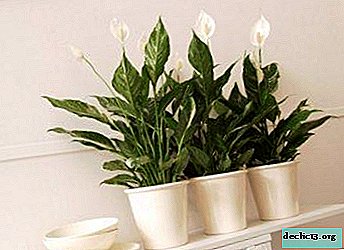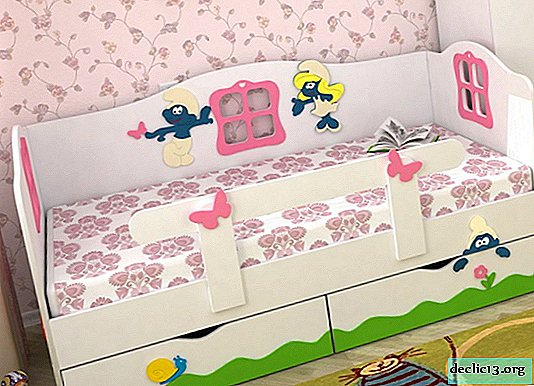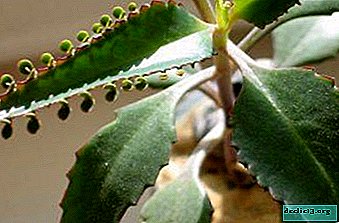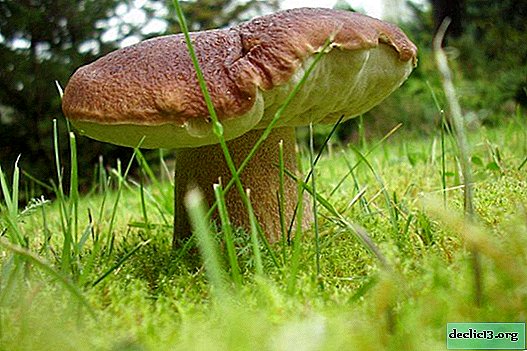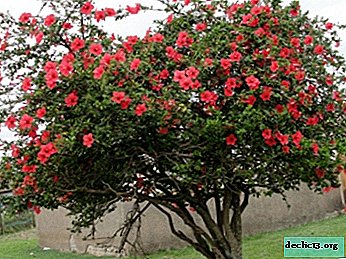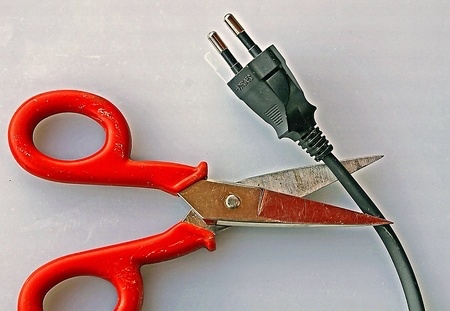Resuscitate a fat girl: how to save a money tree if the roots are rotted or the trunk becomes soft?
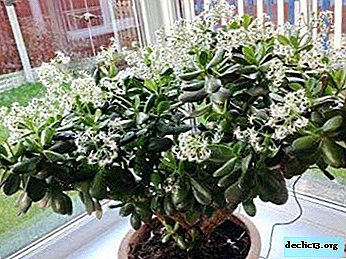
Money tree (Crassula, Crassula) is a plant in the family Crassulaceae, which is rooted in South Africa. Very popular in indoor floriculture, as unpretentious in care. Money tree is often called a flower for the lazy.
It is rarely susceptible to various diseases and pests, but the problem of rotting of the roots and trunk is often encountered. We will tell in detail why the trunk of the plant becomes soft, and the roots rot, we describe what methods exist for resuscitation of this beautiful flower.
Diagnosis of rotting fatty
Crassula is thermophilic, requires moderate hydration.
The main problems when growing:
- loss, softening or discoloration of leaves;
- the appearance of pigmentation on the leaves;
- rotting of the stem and roots.
A change in appearance indicates the appearance of a disease. It is important to identify it in time and prevent repeated cases.
Consider rotting, or ammonification, that is, destruction by bacteria of organic substances containing nitrogen or a disease, manifested in the browning and decay of parts or the whole plant. The reason is often fungi, but there are bacterial rot, or bacterioses. There are lesions of the root system, trunks and branches, leaves, berries and fruits. The process of decay is found everywhere, including in indoor colors. How to determine that decay has begun? This can be detected by appearance and smell.
Remember! Study the roots carefully! Not always their change indicates rotting.Trunk
With an excess of moisture in winter or a lack of light in summer, the stem of the crassula can stretch, twist and rot ugly. Usually, rotting of the trunk indicates this process on the roots of the plant. A characteristic feature is stickiness at the base of the stem and an unpleasant odor.
Crassula requires varying degrees of moisture in winter and summer. In winter, the likelihood of diseases is higher.
Roots
 If the fat woman has been in the sun for a long time without watering and its roots have changed, water the flower a little. When the wrinkled and dried rhizome acquires its usual form, you can proceed to regular watering in the usual volume.
If the fat woman has been in the sun for a long time without watering and its roots have changed, water the flower a little. When the wrinkled and dried rhizome acquires its usual form, you can proceed to regular watering in the usual volume.
When the roots of the flower rot, the growth process stops, the leaves fade and turn yellow. To inspect the roots, the flower must be removed from the container. Rhizome softens gray-brown, root hairs dry. When extracting the flower, some of the roots remain in the soil, they are slimy, there is a musty smell. If the lesion is severe, then the outer layers of the root and stem begin to exfoliate.
The lateral and central roots turn brown and rot. Often they are caused by pathogenic microorganisms. These include fungi causing pathogens of such rot as fusarium, verticillosis, white sclerotic, gray, late blight, and also bacteria causing bacterial rot.
Causes of the problem
The causes of rotting of the roots and softening of the trunk are common. Consider them. The most likely are:
- The purchased flower was not transplanted to another soil (in flower shops they usually use moisture-resistant soil).
- The soil is not suitable (you can not plant in heavy clay soil, you need loose soil, special for succulents).
- Frequent change of soil (does not have time to take root, the rhizome is injured).
- There is no drainage (allows you to absorb excess moisture).
- There are no openings in the pot for draining excess water.
- Excessive watering (increase in watering in summer or not reducing it in winter).Important! In the summer, the money tree needs to be watered as the soil dries, and in the winter - a couple of times a month.
Ground moisture can be checked with wooden sticks.
- The pot is too big.
- Fungal and bacterial infections.
And also the causes of decay can be:
- Wet or gray rot (Botrytis cinema mushroom) and Fusarium rot (Fusarium oxysporum mushroom) affect the vascular system of plants. Further through the roots penetrate deep into the soft tissues of all organs. Outwardly, this manifests itself as the presence of brown soft patches on the plant, the size of which increases with time.
- Late blight (pathogens - oomycetes of the genus Phytophthora) develop on the root neck of young plants. Most susceptible to them are flowers grown from seeds. As a result, the disease develops a black leg.
- Bacterial rot and its causative agents have been little studied, since they are difficult to identify and require expensive chemicals to study them. The external manifestation is the same as with fungal diseases.
How to save a plant?

What to do if the trunk becomes soft?
- Remove the flower from the pot.
- Dry it.
- Transplant into new soil.
If you dried the plant, but it still rots, then only rooting by rooting of the surviving cuttings will help you.
Crassula tolerates a lack of watering better than waterlogging!
How to deal with rotting roots?
There are several ways to resuscitate a plant if some of the roots have rotted:
- Transplant into another pot, completely replacing the soil. Be sure to rinse the roots with warm water, remove the most affected areas. Sprinkle the slices with activated carbon. The affected flower can be treated with Fundazole solution - a drug used to treat and prevent diseases of indoor and garden plants. According to the instructions, spraying is carried out during the growing season with a 0.1% solution.
Dilution method: 10 g per 10 l of water, while the consumption of 1.5 l of solution per 10 sq.m. For rot, two treatments are recommended with a break of 3 to 7 days. You can apply at the first signs of the disease on indoor flowers. Weak solution of potassium permanganate (potassium permanganate): 3 g per liter of warm water is also an effective tool in the fight against rot.
- Transplant into a larger pot, using both soil and charcoal in a ratio of 2: 1. It has hygroscopicity, that is, a high ability to absorb water.
Such a soil mixture must be prepared in 2-3 weeks.
What to do if the roots of the plant rot? If the roots and part of the trunk are completely rotted, then the output is as follows:
- Trim above the rot.
- Disinfect the tool after each cut.
- Dry the slice (can be sprinkled with activated charcoal).
- Put in a glass of water.
- Wait until the roots of 4-5 cm grow.
- Plant in fresh ground.
With fungal and bacterial lesions, you can use a weak solution of potassium permanganate. At the same time, fungicides are also used to combat bacterial rot; antibiotics (penicillin, gentamicin and others) can also be used. The flower is sprayed with an aqueous solution of the drug.
We examined the causes of rotting money tree, especially the salvation of it from death. In general, a very unpretentious plant is easy to destroy with ordinary waterlogging. In order to prevent this, create the necessary conditions for Crassula, and for many years she will delight her with her beauty.
Useful video
We offer you to watch a video on the prevention of rotting of the roots of the Krasula:


